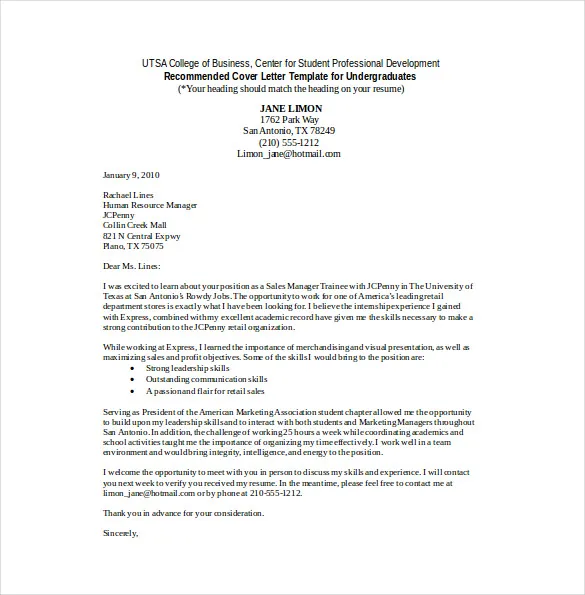Why a Strong Sales Cover Letter Matters
In the competitive world of sales, a well-crafted cover letter is your first opportunity to make a lasting impression. Unlike a resume, which provides a factual overview of your career, a sales cover letter allows you to showcase your personality, passion, and unique value proposition. It’s your chance to demonstrate why you’re not just qualified, but also the ideal candidate for the role. This document serves as a crucial bridge, connecting your past experiences to the specific requirements of the job and the goals of the company. A compelling cover letter can significantly increase your chances of getting an interview, setting you apart from other applicants who may have similar qualifications. It is your first point of contact with a potential employer and can establish your credibility, and your enthusiasm for the position.
Highlighting Your Sales Achievements
Your sales cover letter should be a testament to your successes. Rather than simply listing job responsibilities, focus on your accomplishments and the results you’ve achieved. Think about specific instances where you exceeded sales targets, closed major deals, or improved sales processes. Sales is a results-oriented field, so providing concrete evidence of your abilities is essential. This could include details on how you increased revenue, acquired new clients, or improved customer retention rates. Remember, potential employers are looking for someone who can deliver results, and your achievements are a direct reflection of your capabilities. By showcasing your past successes, you build confidence in your ability to perform and excel in the new role.
Quantify Your Accomplishments
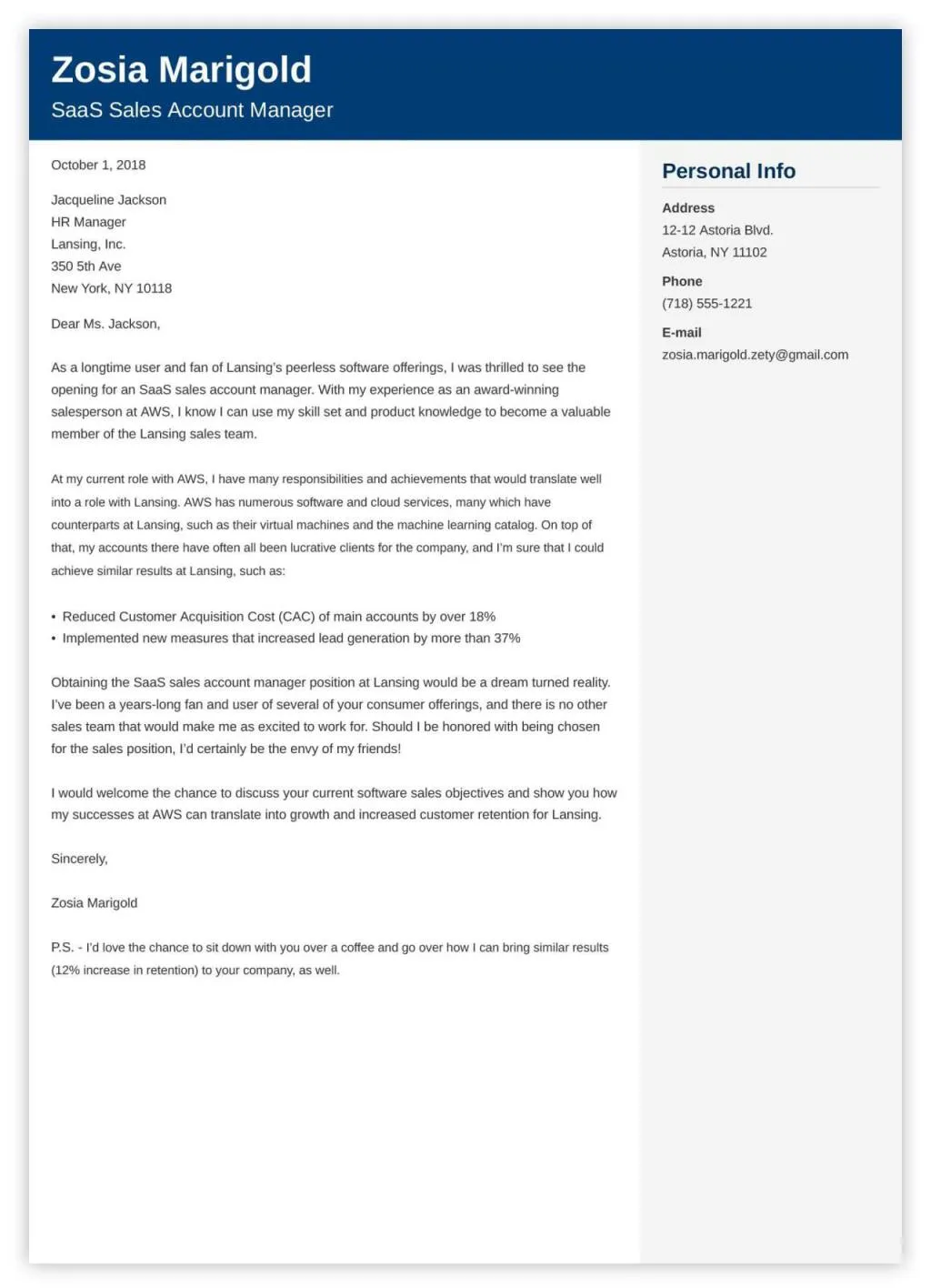
Numbers speak louder than words, especially in sales. Whenever possible, quantify your achievements using data. Instead of saying you ‘increased sales,’ specify by how much, such as ‘increased sales by 20% in one quarter.’ Provide specific figures on revenue generated, deals closed, or the number of new clients acquired. This approach not only makes your achievements more impactful but also provides concrete evidence of your capabilities. Using metrics like ’exceeded sales quota by 15%’ or ‘closed deals worth $1 million’ showcases your ability to drive results. Quantification gives the hiring manager a clear understanding of your impact and the value you can bring to their company. Remember, sales is about measurable outcomes, so your cover letter should reflect this.
Focus on Sales Targets and Quotas
One of the most important aspects to highlight in your sales cover letter is your ability to meet and exceed sales targets and quotas. Describe your experience with sales goals, your strategies to achieve them, and your track record of success. Did you consistently meet or surpass your quota? Detail the specific numbers, such as ‘consistently exceeded sales quotas by an average of 10% each quarter’ or ‘achieved 150% of my annual sales target.’ Highlight how you developed and implemented strategies that led to these accomplishments. This could involve lead generation, client relationship management, or sales process optimization. Demonstrate your commitment to achieving goals and your ability to drive revenue growth. This shows you are not just a salesperson, but a top performer who can deliver results, which is a key quality that employers seek.
Use Action Verbs to Describe Achievements
The language you use in your cover letter can significantly impact its effectiveness. Start your sentences with strong action verbs that highlight your achievements and skills. Instead of passive phrases, use dynamic verbs that demonstrate your proactive approach to sales. For example, use ‘achieved,’ ’exceeded,’ ‘implemented,’ ’negotiated,’ ‘closed,’ ‘managed,’ or ‘developed’ to start your sentences. This makes your accomplishments more impactful and demonstrates your ability to take initiative and drive results. Using action verbs creates a sense of energy and enthusiasm, making the reader more engaged with your cover letter. It also helps to create a narrative that showcases your accomplishments in a clear and concise way, making your experiences more memorable and compelling to potential employers.
Tailoring Your Cover Letter to the Specific Role
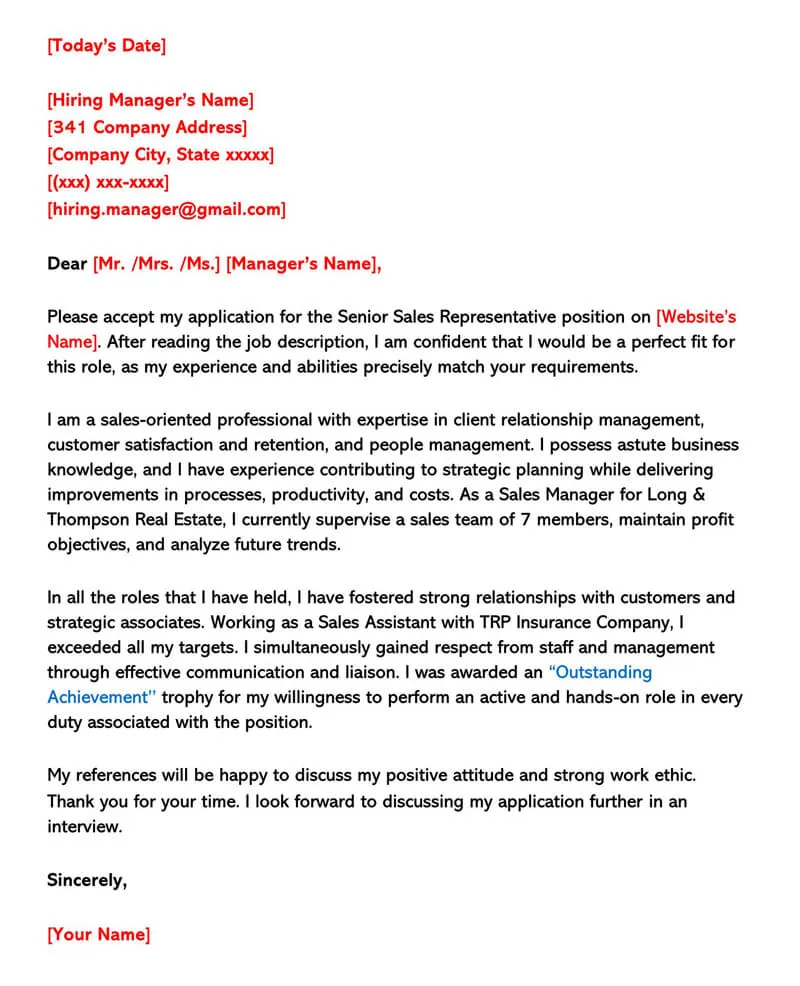
Generic cover letters are easily spotted, and often discarded. Customize each cover letter to match the specific job you are applying for. Start by carefully reading the job description and identifying the key requirements and qualifications. Then, highlight the skills and experiences that are most relevant to the role. Tailoring demonstrates to the hiring manager that you have carefully considered the position and are a good fit. This approach shows that you have taken the time to understand the company’s needs and are genuinely interested in the opportunity. Make sure to directly address the requirements outlined in the job description, using similar keywords and phrases where appropriate. This makes it easy for the hiring manager to see how your background aligns with their specific needs.
Researching the Company Culture
Before you start writing, research the company you are applying to. Understanding the company’s values, mission, and culture allows you to tailor your cover letter to better align with their needs. This research can also help you identify how your skills and experience align with the company’s goals. Look at their website, social media profiles, and any recent press releases or articles about the company. This will give you insights into their values, recent achievements, and current priorities. Mention specific aspects of the company’s culture or mission in your cover letter. This demonstrates your genuine interest and shows you are a good cultural fit, which can significantly increase your chances of getting an interview. By understanding the company’s landscape, you can effectively make your application stand out.
Aligning Your Skills and Experience
Clearly show how your skills and experience match the job requirements. Refer back to the job description and highlight the skills and experiences the employer is looking for. Provide specific examples of how you have demonstrated these skills in previous roles. If the job description emphasizes the need for relationship-building skills, share an example of a time you successfully built and maintained client relationships. If they are looking for someone with experience in a specific industry, mention your experience and achievements in that field. Tailoring your cover letter to the job’s specific needs will help your application stand out and demonstrate your ability to fill the role. It also helps employers quickly see how your background can benefit their organization, making it more likely for them to invite you for an interview.
Structuring Your Sales Cover Letter
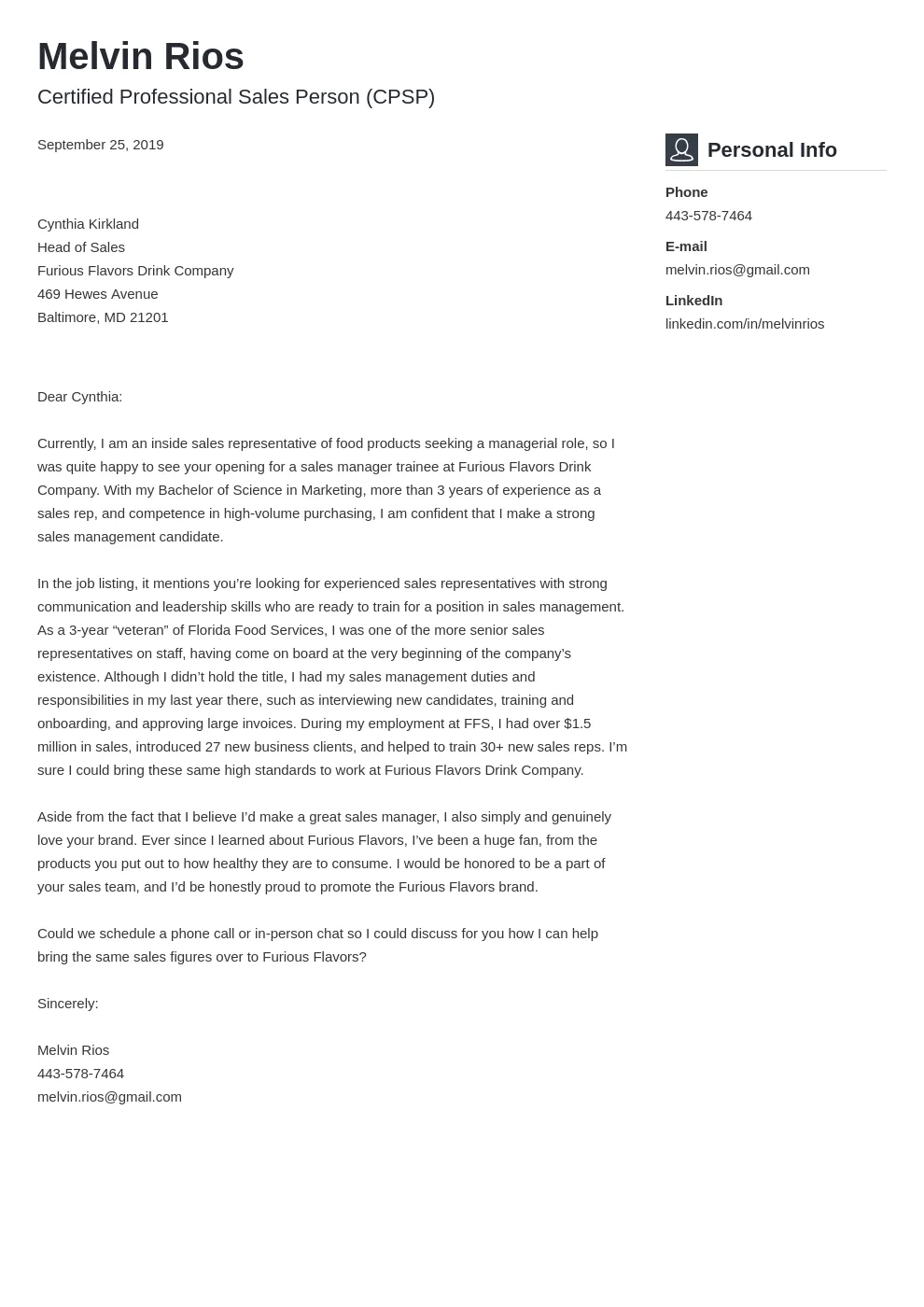
A well-structured cover letter is easy to read and showcases your key accomplishments and qualifications effectively. The structure should follow a logical flow, making it easy for the hiring manager to understand your qualifications and suitability for the job. Your cover letter is your introduction to the hiring manager, and structure helps the recruiter or potential employer understand your skills and qualification. It makes the reader process the information quickly and efficiently.
Formatting Your Cover Letter for Readability
Formatting your cover letter is important for its readability. Use a professional font, such as Arial or Times New Roman, in a readable size (11 or 12 points). Use clear, concise language and short paragraphs to keep the reader engaged. Use bullet points to highlight your accomplishments and skills. This helps make the key information stand out and easy to scan. Ensure there is sufficient white space between paragraphs and sections to avoid a cluttered appearance. A well-formatted cover letter shows that you have attention to detail, which is essential in sales. Well-formatted cover letters demonstrate your professionalism and are easier for the hiring manager to review and comprehend.
The Header Contact Information
Start with a clear header that includes your contact information. This should include your name, address, phone number, and professional email address. Make sure your contact information is accurate and up to date, as this is how the hiring manager will contact you. Also, include the date and the hiring manager’s name and title if known. If you are using a template, be sure to update all the fields to reflect your contact information. Ensure your email address sounds professional and reflects your name, avoiding informal or unprofessional aliases. Placing your contact information at the top of the cover letter makes it easy for the hiring manager to quickly contact you if they want to schedule an interview.
The Opening Paragraph Captivate
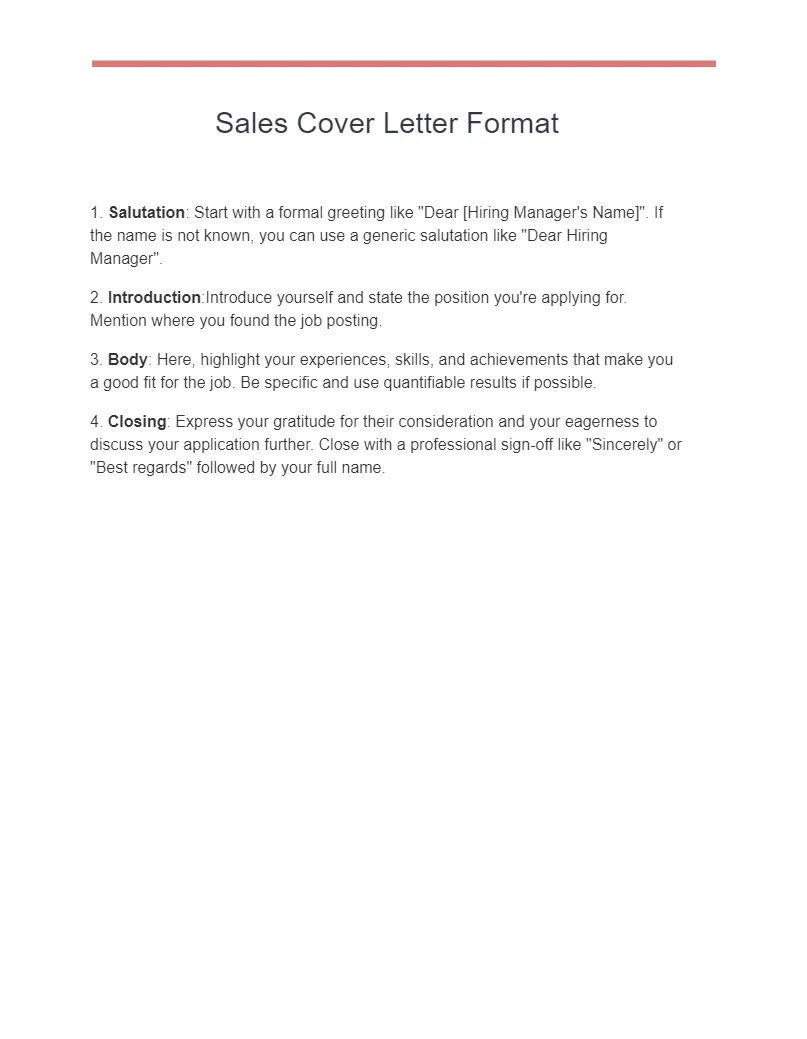
The opening paragraph of your cover letter sets the tone and makes the first impression. Start with a strong hook that grabs the reader’s attention. Briefly mention the position you are applying for and how you heard about it. Then, immediately highlight your key qualifications and what makes you a good fit for the role. This is your opportunity to create intrigue and encourage the reader to continue. Make it concise and clearly state your value proposition. Be confident and enthusiastic, showcasing your interest in the opportunity. Avoid generic opening lines and instead, tailor your opening to the specific job requirements. This will instantly captivate the hiring manager and motivate them to read the rest of your letter.
Body Paragraphs Demonstrate Value
The body paragraphs of your cover letter are where you provide details about your skills, experience, and achievements. Organize your body paragraphs logically, highlighting your most relevant qualifications first. Include specific examples of your successes, quantifying them whenever possible. Use action verbs to showcase your initiative and accomplishments. The body of your cover letter is your opportunity to clearly demonstrate your value to the employer. Focus on what you can do for the company and how you can contribute to their success. Tailor these paragraphs to the specific requirements listed in the job description. This section is where you bridge the gap between your skills and the company’s needs.
Showcase Relevant Skills and Experiences
In your body paragraphs, focus on showcasing the skills and experiences most relevant to the sales role. Identify the key skills and experiences mentioned in the job description and highlight them with specific examples. This could include your ability to build client relationships, your negotiation skills, or your experience with a specific sales methodology. Provide evidence of your experience through concrete examples and data. Mentioning specific clients or projects you have worked on can help make your experiences more tangible. Demonstrate that you not only possess the required skills, but that you have successfully used them in a professional setting. Relate your experiences to the job requirements to give potential employers the confidence that you are the right candidate for the role. Include a showcase of your sales skills to get the attention of the employer.
Quantify Results with Data
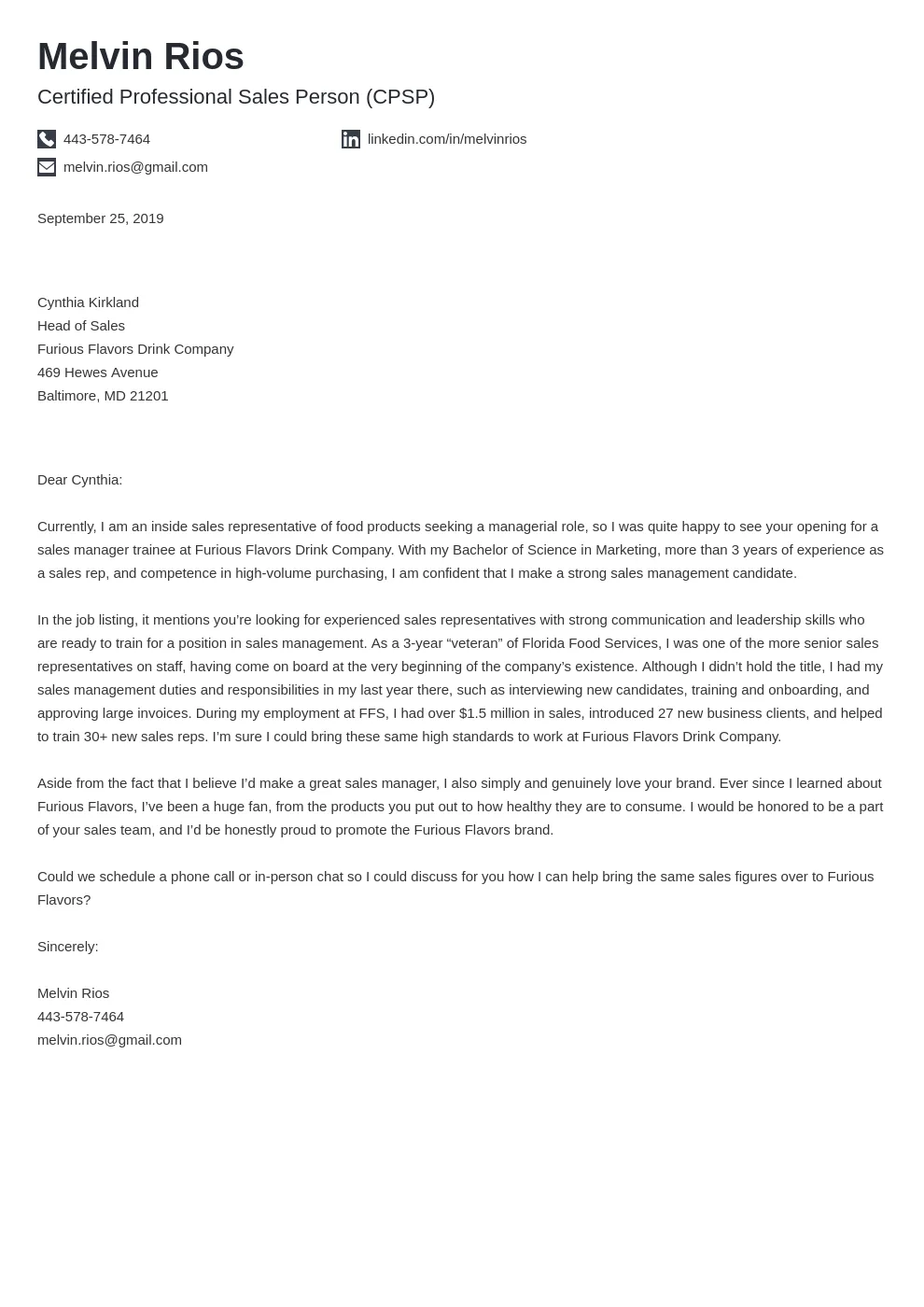
Backing up your claims with data is essential in sales, and this is especially important in your cover letter. Provide hard numbers to quantify your achievements and make your accomplishments more impactful. When describing a successful campaign, mention the percentage increase in sales or the revenue you generated. Show how you increased lead generation, customer conversion rates, or improved client retention. Quantifying your results demonstrates your ability to deliver tangible outcomes and makes your achievements more believable and impressive. Data allows you to provide a clear picture of your capabilities and how you can contribute to the company’s bottom line. Using numbers helps hiring managers quickly understand your value.
Closing Paragraph and Call to Action
Your closing paragraph should summarize your key qualifications and reiterate your interest in the position. Thank the hiring manager for their time and consideration. End with a clear call to action, such as requesting an interview or expressing your eagerness to discuss the opportunity further. Make it clear that you are ready to take the next step and are looking forward to hearing from them. This shows your proactive approach and demonstrates your enthusiasm for the job. Avoid generic closing phrases, and instead, tailor your closing to the specific job. End your cover letter with a strong and professional tone, leaving the hiring manager with a positive impression.
Proofreading and Editing Your Cover Letter
Before submitting your cover letter, proofread and edit it carefully. Typos, grammatical errors, and unclear language can make a negative impression on the hiring manager. You should always aim for a polished and professional document, so proofreading and editing are essential. Consider the overall tone and clarity of your cover letter. Review your cover letter multiple times to ensure there are no errors. Getting a second pair of eyes can also be helpful. A well-proofread and edited cover letter demonstrates attention to detail and shows that you are committed to presenting your best self.
Check for Grammatical Errors
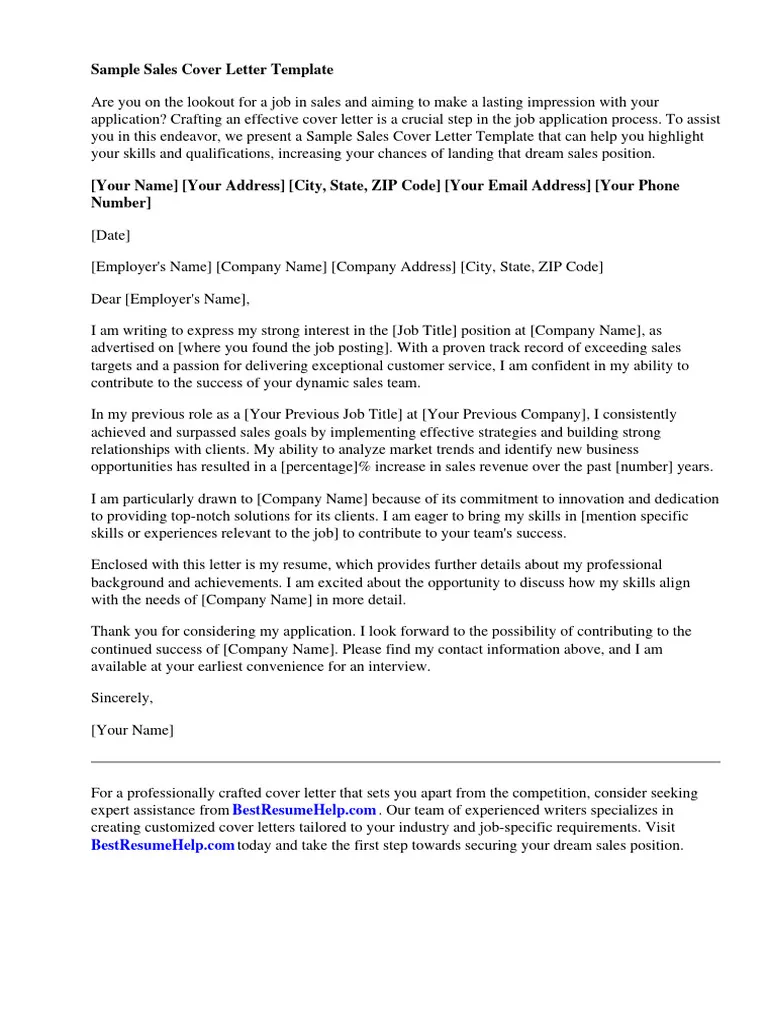
Always check your cover letter for grammatical errors and typos. These errors can detract from your credibility and make a negative impression. Use a spell checker and grammar checker to catch any mistakes, but also read through the letter yourself to ensure clarity and accuracy. Pay close attention to punctuation, sentence structure, and word choice. Incorrect grammar or punctuation can change the meaning of sentences, so always be sure to review your work carefully. Proofreading can also help you avoid any embarrassing errors. Carefully review your cover letter to ensure it reflects your professionalism and your attention to detail.
Ensure Clarity and Conciseness
Ensure your cover letter is clear, concise, and easy to understand. Avoid overly complex sentences or jargon that might confuse the reader. Be straightforward in your writing and focus on conveying your message effectively. Make sure that each sentence contributes to your main points and that the overall letter is focused and well-organized. Use active voice to make your writing more dynamic and engaging. This will help to demonstrate your value quickly and convince the hiring manager that you are the right fit for the role. By making your cover letter clear, concise, and easy to read, you improve your chances of getting an interview and ultimately landing the job.
